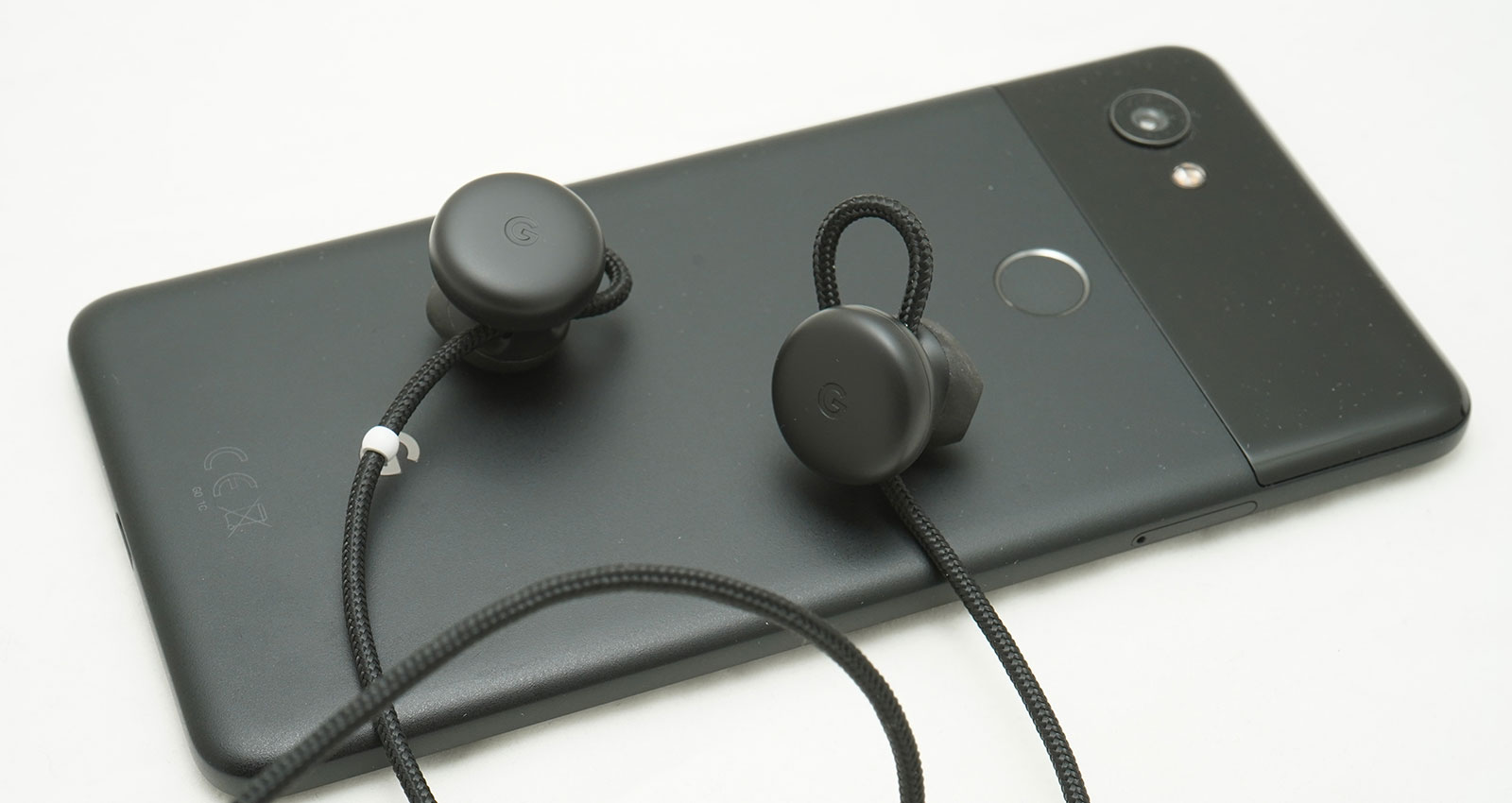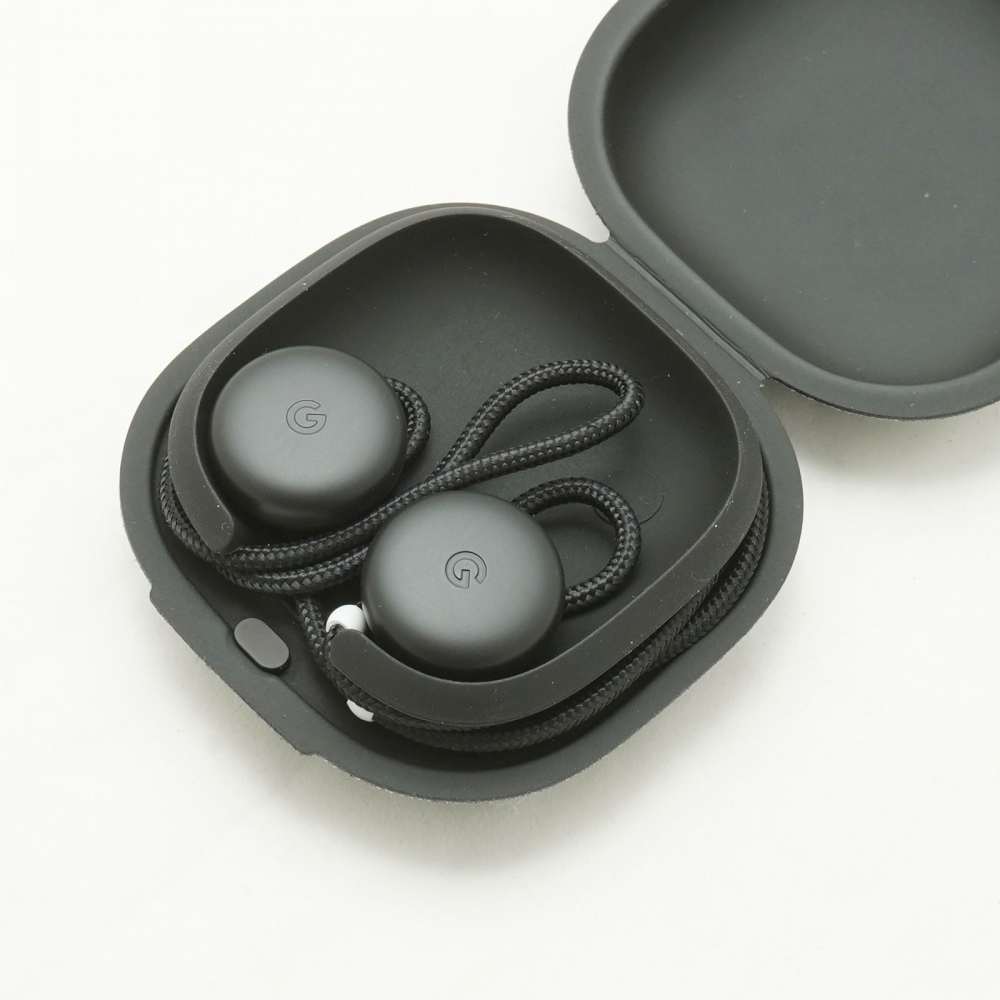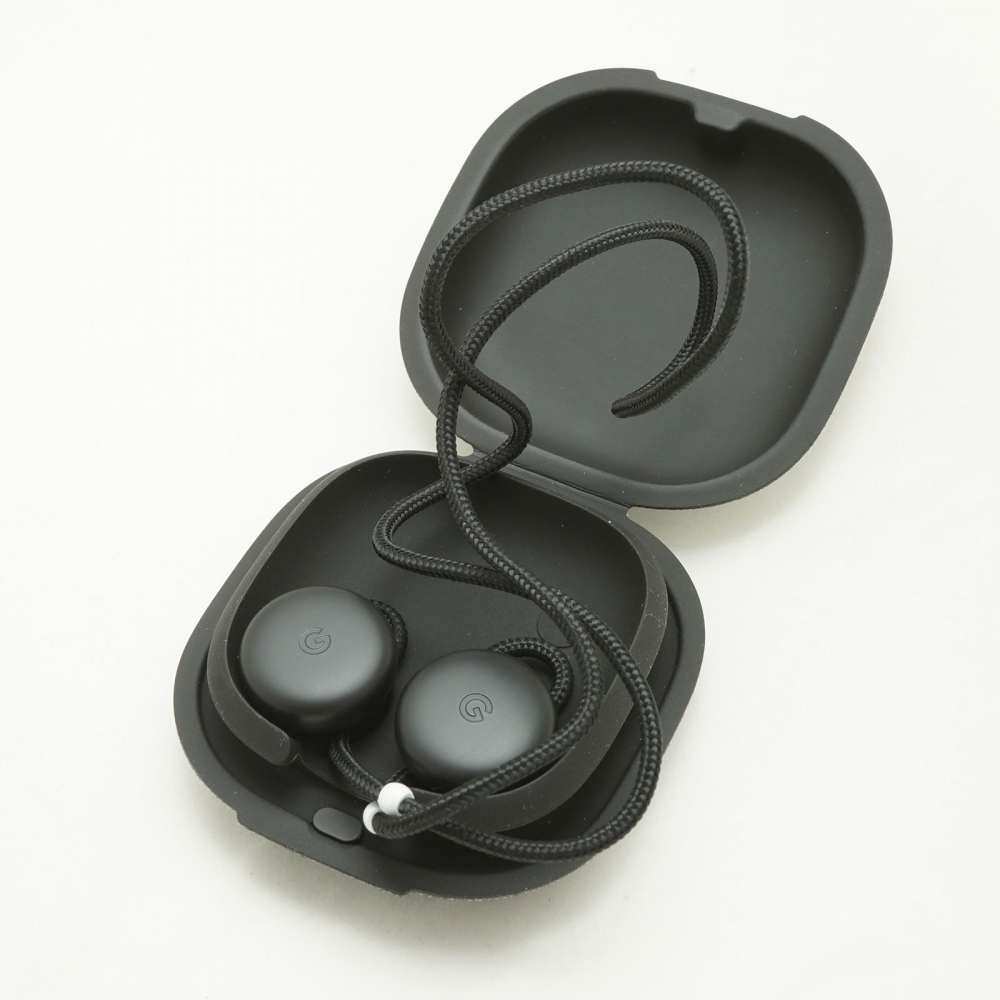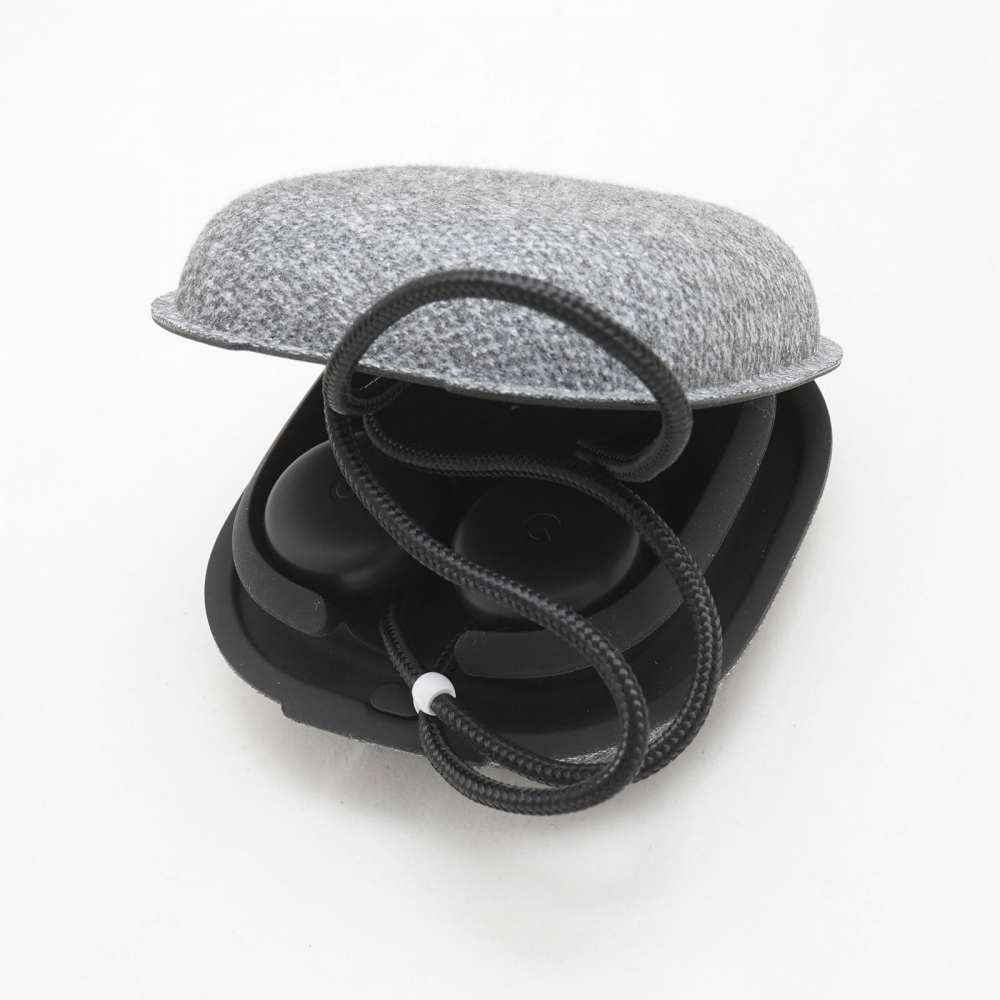Quick review
The good
The not-so-good
Google is known for its major mobile operating system, but what happens when it makes a pair of earphones built for Android? You get the Pixel Buds, so are they any good?
We’ve never been too enamoured by earbuds, and while Apple continues to push them, most manufacturers have moved on to earphones, and with this reason: earphones tend to fit ears better and both let less noise in and audio out. Generally earbuds are wasteful with sound and lack the comfort at the expense of simplicity, because anyone can just stuff them in rather than fiddle with the right tip for the right ear and the right sized aural cavity.
And yet earbuds are where we are for the Google Pixel Buds, Google’s first attempt at a portable audio product, so what makes them different?
Design and features
The obvious thing that makes them different is that they’re made by Google, which is a first for the search engine giant.
After setting the smartphone world on fire with one of the world’s most used operating systems, and then subsequently showing everyone how to make the best Android phone experience with the Pixel smartphones, it’s now building what it believes is the best audio experience made for its phones.
And that’s what the Pixel Buds are about, with Google designing a pair of earbuds linked by a small material cord, talking to your phone over Bluetooth and using a small touchpad on the right ear to control things.
It probably goes without saying that Google has built the Pixel Buds to be very different, and that’s kind of what you get: two small earbuds that are charged in a soft case with a battery on the inside, and the threaded connection cable designed in such a way where they act as customisable earwings so they stay stuck in your ear (ish).
In essence, these aren’t your ordinary earbuds, and that’s intentional.
In-use
However using the Pixel Buds shows Google is paying attention to the way companies like Apple are building their own audio solutions, at least in some ways.
For starters, there’s the act of pairing: with the Apple AirPods use of the W1 chip, pairing is a cinch, and you merely need to have the AirPods near an iPhone for Apple to realise that you’re trying to pair them, and for the process to start.
The same is actually true of the Pixel Buds on the Pixel 2 XL, and the pairing process doesn’t take long. If you don’t happen to have a Pixel phone, your pairing is handled by holding down a button on the inside of the case while the earphones are plugged into it.
Overall, it’s an easy process, though that is probably the easiest part of using the Pixel Buds, and that’s thanks in part to an overly fussy touchpad.
On the right earbuds, Google has provided a touchpad for the occasional pause and play with one finger press, while swiping one direction will let you go volume and up while the other direction will understandably offer volume down. Sounds easy, right?
Unfortunately, these appear to be the only gestures, outside of holding down the touchpad entirely to evoke the Google Assistant, and she listens, but only as you hold the touchpad down. There doesn’t appear to be a track forward or track back, so jumping tracks here will still need that phone, or a smartwatch if you happen to have invested in one of those, too.
That means using the Pixel Buds can be a touch cumbersome, and is punctuated by their ability to only switch off when you put them inside the charge case, meaning you’re still connected as you try to throw them back in the box, fumbling through that process.
Performance
Fortunately, they sound a little better than the instructions needed to use the things, as Google’s Pixel Buds have a profile made for folks who like bass.
In fact, the overall sound profile offered by the Google Pixel Buds is more like what would happen if the old Beats by Dre engineers worked on the earbuds, because that heavy attention to the bottom end with a tight snap of detail is very much what’s on offer here.
Tested with the Pickr Sound Test (which you can always listen to yourself), a set starting with electronica yields a very focused attention on the bottom end, as the bass from Balmorhea’s “Candor” kicks in first, followed by mids and highs, resulting in a punchy albeit unbalanced sound.
That feeling doesn’t let up for most of the journey with the Pixel Buds, revealing an overwhelming bass in the acapella of Pentatonix which doesn’t work, while finding out that it does with the Propellerheads. Throughout all of this, the detail is clear, but the balance just doesn’t feel right.
And yet it works completely well in old school soul, with Marvin Gaye’s “Ain’t No Mountain” shining on through, even of Michael Jackson’s “Billie Jean” makes you focus on the famous bass line over everything else, which kind of defeats the point.
That sense of overpowering sound continues in quite a bit of the pop and rock we found, while well-engineered rock from the likes of the Deftones and Nirvana didn’t end up drowning out the singers or guitars as much as we expected. There’s no doubt the bass is still in charge on these, but the effect isn’t as noticeable.
And even in classical and jazz, that push for the lows is still clear, as your ears pick up on an upright bass more distinctly than they might otherwise with another pair of earbuds, earphones, or cans.
Sufficed to say, while the Pixel Buds can sound good and clear, their balance just doesn’t feel right, and it’s hard not to feel that Google amped up the bass just a little higher to account for the fact that these are earbuds, and earbuds tend to let more noise out, giving you something more to focus on.
Comfort
We don’t usually have a section for it, but comfort is one of those areas worth commenting on, because the Pixel Buds aren’t very comfortable.
Maybe it’s just us, but while the earbud never really feels comfortable — or as comfortable as say an earphone — the Pixel Buds feel like a cross between being too large and too cumbersome to be comfortable for a long period of time.
Language
If you can survive the comfort and happen to have a fairly new phone, however, you can get stuck into one of the major features being touted with the Pixel Buds: language translation.
Specifically, Google wants the world to know that it has basically built the digital embodiment of something Star Trek had dreamt up all those years ago, with a universal translator that could tell you what was being said in any language, alien or otherwise.
While we’ve yet to come across anything extra-terrestrial, we do have the technology to translate other human languages, found of course in Google Translate, which is what the Pixel Buds are able to tap into.
The idea is simple, too, with you merely needing a Pixel phone and the Pixel Buds, and then holding the right Pixel Bud touchpanel to call up the Google Assistant, and then asking for a translator.
From there, Google Translator is supposed to be able to listen to a conversation and relay it back to you.
Unfortunately, the reality is less impressive than the idea of what Google is trying to do, falling short of the science fiction reality you just now Google was boldly trying to go to in the first place.
Instead of having Google’s Assistant listen to the languages around you and send the translated words to your ears, what generally happens is that it doesn’t catch a single thing, and the few times it does, isn’t terrible accurate.
Testing it by listening to a couple of French coworkers speaking their native tongue, the Pixel Buds struggled to relay anything back to us, and out of ten conversations, a grand total of two were picked up, and only one of them relayed accurately.
Worse is that Google’s Pixel Buds only call up Google Translator for about ten seconds, cutting the app off, which you can see as the whole thing tries to work.
This isn’t like the dream of just speaking and letting the translator come in and tell you what’s going on; no, this is merely a shortcut for Google Translator, and not a very good one. In fact, if you open the Google app on your phone and keep your finger hovering over the microphone ready to press at a moment’s notice, you’ll have a firmer grasp on dynamic language translation than Google’s Pixel Buds seem to achieve.
Battery
At least the battery firms things up a little, with the small one inside the earbuds able to offer around four to five hours of charge, while the case itself that you have to store them in sees around 24 all up.
That means you shouldn’t need to charge the case up using its USB Type C connection every day, running the charger on it every two or three days, though keep in mind that the case is the only way to charge them, so once you lose this, well, you’re not going to be a happy listener.
And hey, a positive battery performance is one of the best parts of the Pixel Buds package, so that’s something to cheer for.

Value
However, while the battery isn’t terrible, the value doesn’t feel like it’s doing you any favours, because at $249, Google’s Pixel Buds are hardly polished enough or sound as high quality as their price suggests.
The $250 section of the wireless earphone market is where you can expect great sounding or totally cordfree, or a mixture between both, and yet the Google Pixel Buds offer neither, essentially providing you interactivity, buggy as it is.
What needs work?
And that brings us to the overwhelming problem of the Google Pixel Buds, which is this: for a curious concept that was poised to deliver so much, it’s remarkable how little polish they have.
You know that fear a first generation product occasionally brings? The one that niggles in the back of your mind where you ask yourself endlessly if they had enough time to get out right, and are you maybe wasting your money on a product that needs more incubation before release?
For once, your paranoia is founded, because these, Google, are not your best buds, not by a long shot.
Overly sensitive touchpad aside, Google’s Pixel Buds feel like they’re missing so much of what other earphones deliver, and in an age where totally cordless has become the big deal feature, it is staggering that Google missed the memo.
There are also the issues affecting the performance, like an overly bassy sound that can come across like a first-generation Beats, and one without an awareness for volume levelling. Simply put, you have to live with music either loud, very loud, or not very loud at all, with no middle ground on these earbuds.
Bizarrely, Google’s Pixel Buds don’t offer the level of volume balancing we’ve come to expect as “normal”. Instead, we were forced to pick between “not overly loud” and “loud” in our testing, which makes for a quick bit of frustration.
If you can some how get over that — or you don’t care because your hearing isn’t great to begin with — you may be curious how the storage of the earphones works, which is to say it’s either Google’s way or none at all: to pack the Pixel Buds up, put them in the right way and then fold the cable around the case.
That works, but no other way does, meaning you need to consider a good few seconds when storing your Pixel Buds after taking them from your ears. You can’t just scrunch the earbuds up and have them fit, because they won’t. You can’t stuff them in a different way to Google’s method, because it won’t work. And you actually don’t want to take them from your ears and just put them in the pocket, because they won’t shut off, leaving the Pixel Buds’ touchpad on and connected to your phone.
Instead, you need to store the Pixel Buds in the soft case exactly how Google tells you to, and this is super frustrating. It’s not the quick magnetic case design of so many earphones, nor is it the “wrap it your way” design of pretty much every other earphone; this is specific and considered, and you can consider it pretty annoying, too.
Final thoughts (TLDR)
After a week with the Google Pixel Buds, it is very hard to recommend them to anyone but the die hard Google fanboy or folks that really, really, really, really, really, really love earbuds, and we’re not sure we know of many in that category.
Earbuds aren’t exactly a common thing these days, as more manufacturer choose earphones instead. Apple hasn’t, however, and so while the design is a little unorthodox, the Apple AirPods offer one of the better earbud experiences around. And after testing the Google Pixel Buds, it’s clear Apple has the edge in this rather small category.
It’s not even a question of comfort, though the Google Pixel Buds don’t win us over there. No, it’s about audio and performance, and even that general feeling you’re getting something well matched to the price, because at $249, it is really hard to identify value in the Pixel Buds.
Maybe next time, Google, because this first generation product doesn’t feel anywhere near as polished and ready for our ears as we had hoped.











